UC Gardening Blogs
'Adventure Awaited' at Virtual Reality Demonstration
"Adventure Awaits!" the theme proclaimed. And that it did Saturday at the 105th annual UC Davis...
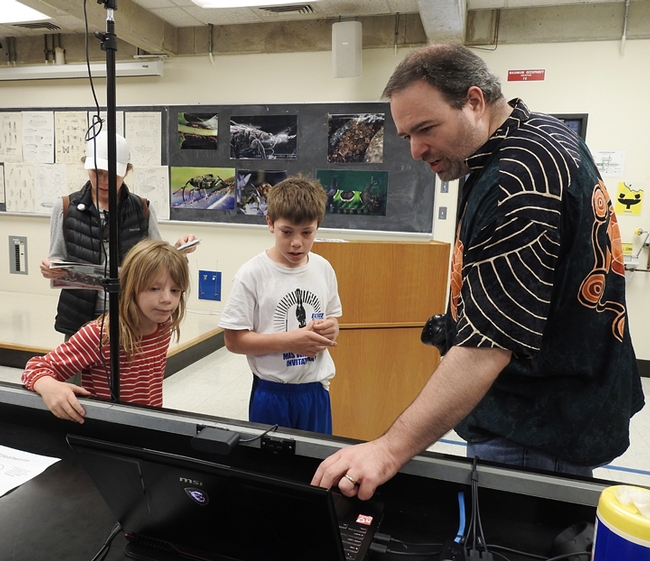
UC Davis medical entomologist Geoffrey Attardo shows Sebastian and Kamila Ehrlich examples of what insects they might want to see in virtual reality. In back is their mother, Carollina Ehrlich. (Photo by Kathy Keatley Garvey)
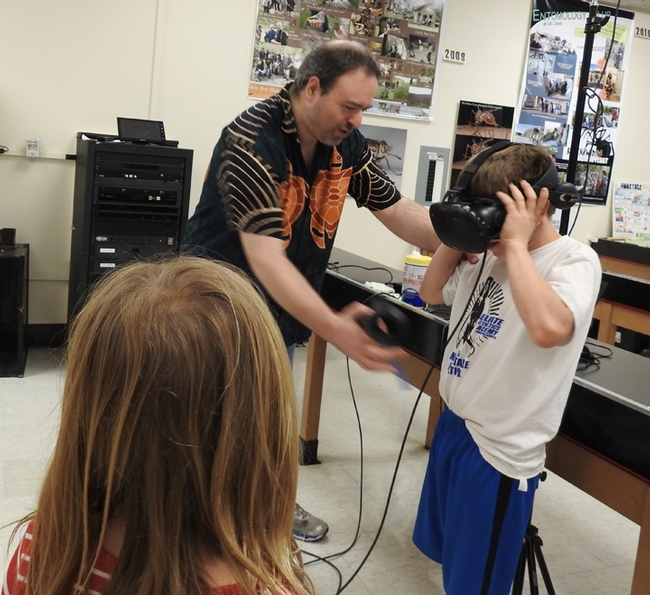
Sebastian Ehrlich enjoying the session. (Photo by Kathy Keatley Garvey)

"That was cool!" Sebastian Ehrlich removes the headset. (Photo by Kathy Keatley Garvey)
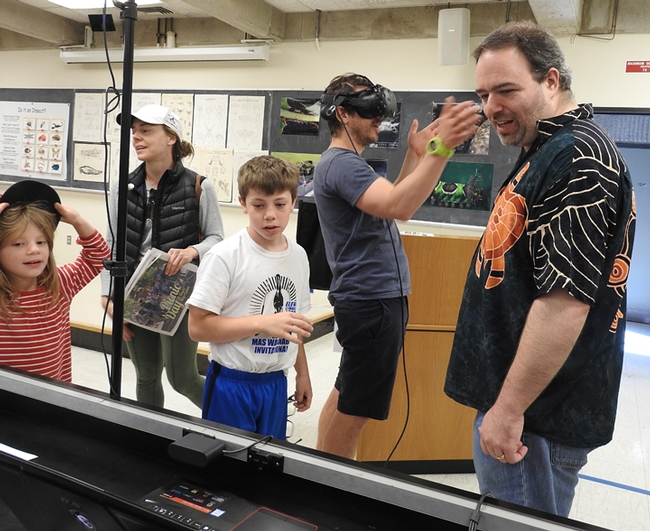
Dad Ethan Ehrlich (background) reacts to the 40-foot-tall bugs. With him are wife Carolina, children Sebastian and Kamila, and UC Davis medical entomologist Geoffrey Attardo. (Photo by Kathy Keatley Garvey)
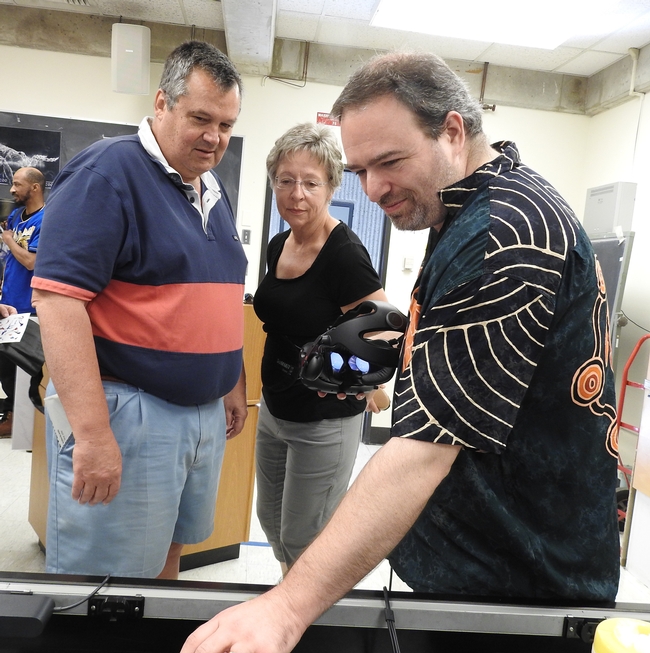
UC Davis alumnus Paul McClelland (zoology)of Sunnyvale selects what insect he wants to see in virtual reality. With him are his wife Marmirjam and UC Davis medical entomologist Geoffrey Attardo. (Photo by Kathy Keatley Garvey)
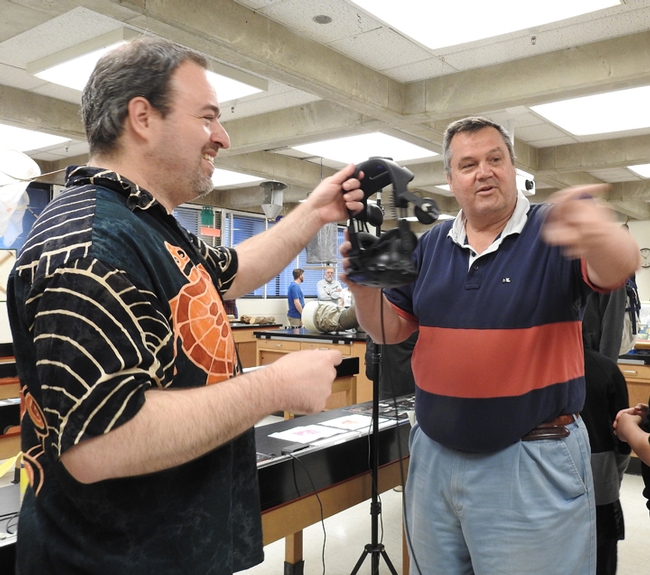
"That's fascinating!" said Paul McCelland, as he hands off the headphones to another member of his party. (Photo by Kathy Keatley Garvey)
Just Grubbin' Around
Shoveling isn't usually my idea of fun, but after months of rain, I was so excited to get into the garden and start prepping the raised vegetable beds for spring and summer. On a (finally!) recent sunny weekend, my husband and I headed outside to mix in some compost and top off the beds where the soil had settled. As my husband started to turn the first bed, he asked, “what are these white grubs?” And then he observed, “there are a lot of them.” And the final blow, “it's like something out of a horror movie.”
Oh no! We have grubs! To be more specific, we have masked chafers, commonly known as “white grubs” (Cyclocephala spp.). These beetle larvae are white with a brown head, up to 1 inch in length, and have bristles on the underside of the posterior end of the abdomen. Put simply, if you find a large c-shaped white grub, it's probably a – you guessed it – white grub. The species produce one generation each year and the grubs overwinter as mature larvae. In spring and early summer, the white grubs pupate 3 to 6 inches deep in the soil. The adult beetles variously referred to as scarab beetles, May beetles, or June bugs are about one-half inch long and are golden brown with a darker brown head. The adults are attracted to lights at night in the summer, mostly from mid-June through July.
Identifying the masked chafer was confusing because most references discuss how the grubs are attracted to turf grass. The masked chafer grubs feed on roots, resulting in irregular dead patches and resembling drought stress even though there is sufficient irrigation.
We removed our turfgrass three years ago, so I'm not sure why the masked chafers are in our raised beds. Nonetheless, despite their primary reputation for being a turfgrass pest, they will feed on the roots of weeds, vegetable transplants, and ornamental plants. The most severe injury to plants is caused by large grubs feeding on plant roots in the fall and spring.
Masked chafers don't seem to be a serious problem unless there are a lot of them. In our case, one 4'x3' vegetable bed had about 30 grubs. That seems like a lot to me! We've evaluated the various control options, but aren't inclined to try pesticides or nematodes at this point. According to the UC Master Gardener Program of Contra Costa County, removal is the first line of defense and hand-picking the grubs is the best approach. (“Grubs in the Vegetable Garden's Soil” (March 12, 2018) at https://ucanr.edu/blogs/blogcore/postdetail.cfm?postnum=26574.)
So my husband dug them out and squished them. I certainly hope that helps control them.
For information about biological and cultural controls that may help reduce the number of masked chafers infesting turfgrass, see the UC Pest Management Guidelines for masked chafers at http://ipm.ucanr.edu/PMG/r785301311.html. For information about the use of beneficial nematodes to control grubs, see the UC Guide to Healthy Lawns, Beneficial Nematodes, at http://ipm.ucanr.edu/TOOLS/TURF/PESTS/innem.html.
Apparently, the masked chafer is a blueberry pest as well. For information about control of masked chafers on blueberries, see the UC Pest Management Guidelines at http://ipm.ucanr.edu/PMG/r57300411.html.
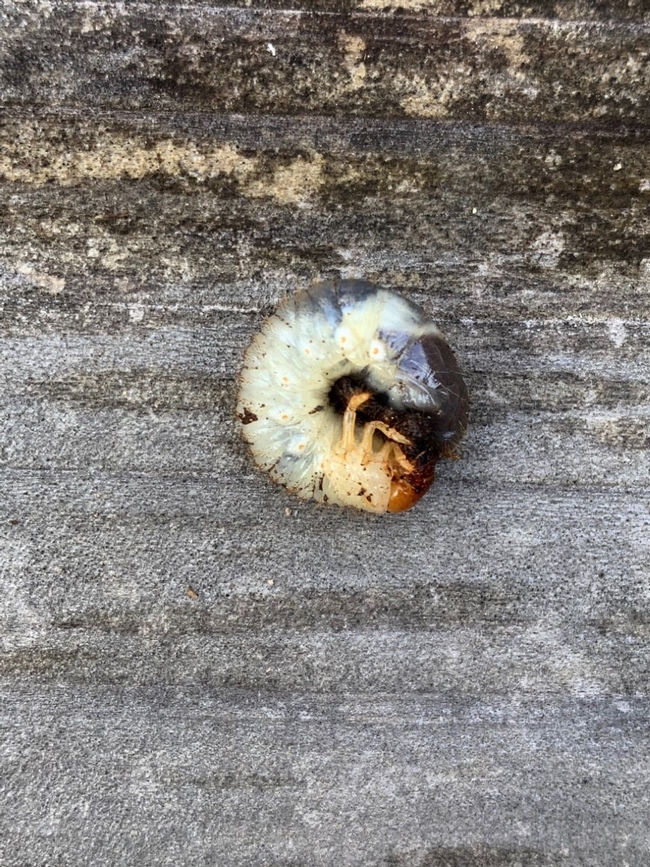
photo by Erin Mahaney
Easter Egg Hunt 2019
It's time for our second annual Easter Egg hunt! Can you guess which pests laid the eggs pictured...
Dr. Bob, Forensic Entomology, and UC Davis Picnic Day
Did you see "Dr. Bob" in Briggs Hall during the UC Davis Picnic Day last Saturday? Forensic...
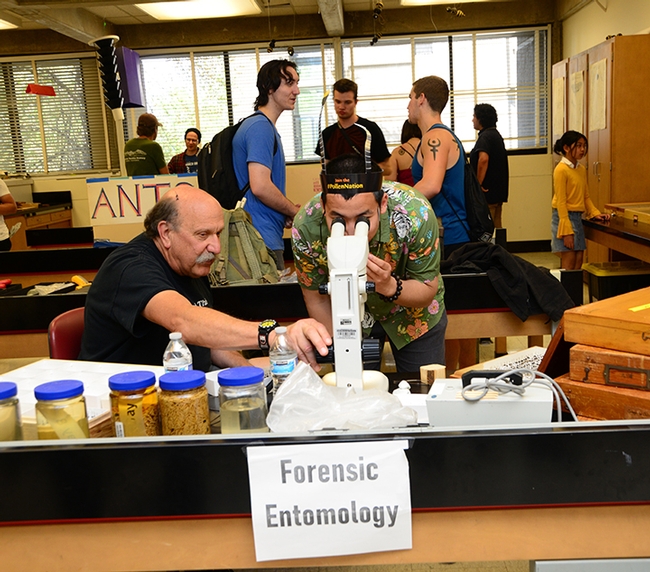
Forensic entomologist Robert Kimsey (left) held forth at the forensic entomology table in Briggs Hall during the 2019 UC Davis Picnic Day. He recently won a College of Agricultural and Environmental Sciences' advising award. (Photo by Kathy Keatley Garvey)
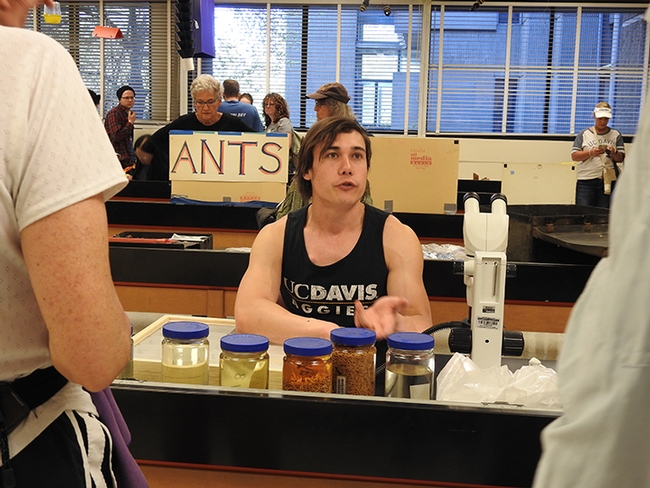
Graduate student/forensic entomologist Alex Dedmon, who studies with forensic entomologist Robert Kimsey, answers a question at the UC Davis Picnic Day. (Photo by Kathy Keatley Garvey)
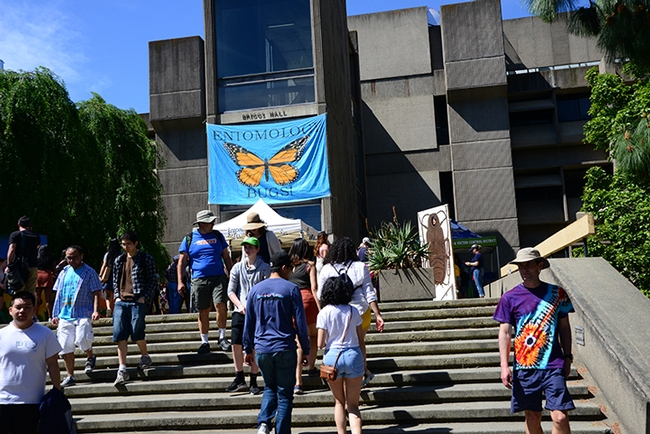
Briggs Hall, home of the UC Davis Department of Entomology and Nematology, was a big draw at the 105th annual UC Davis Picnic Day. (Photo by Kathy Keatley Garvey)
Winter's Hardy Hellebore
2. The Gauls coated the tips of their arrowheads in its powder to ensure the death of their enemies.
3. In the middle ages, Hellebore was burned to protect homes from evil spirits.
4. Even a 20th-century English herbalist, Maude Grieve, was said to scatter Hellebore powder into the air and on the ground so she was invisible.
1. The Hellebore plant is susceptible to fungus botrytis.
2. A gardener can develop a skin irritation from contact with protanemonin, a chemical produced when plant is injured.
3. The specific species Hellebore niger contains glycosides, known to cause cardiac issues. (H. niger, also called Christmas rose, grows over a foot tall and a foot wide, with large white blooms.)
4. Hellebore roots are emetic (medicinal substance inducing vomiting) that can be fatal.
http://pss.uvm.edu/ppp/articles/hellebore.html - Hellebore: The Lenten Rose by Dr. Leonard Perry, Extension Professor, University of Vermont
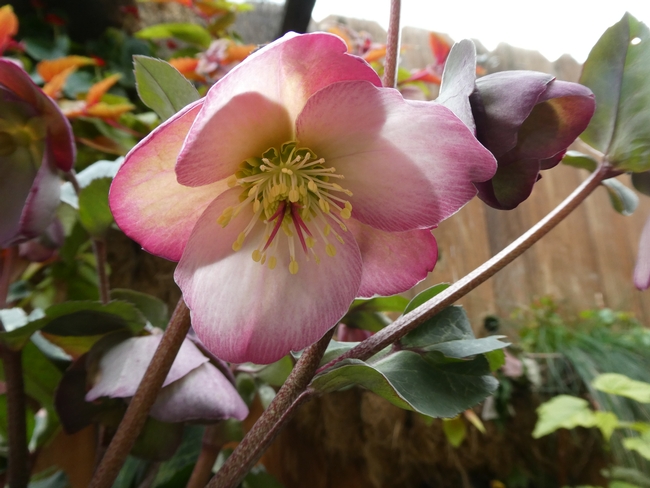
photos by Launa Herrmann
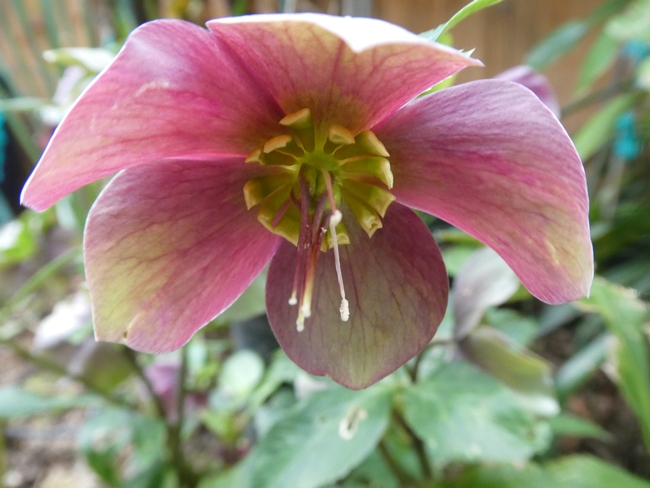
Hellebore2
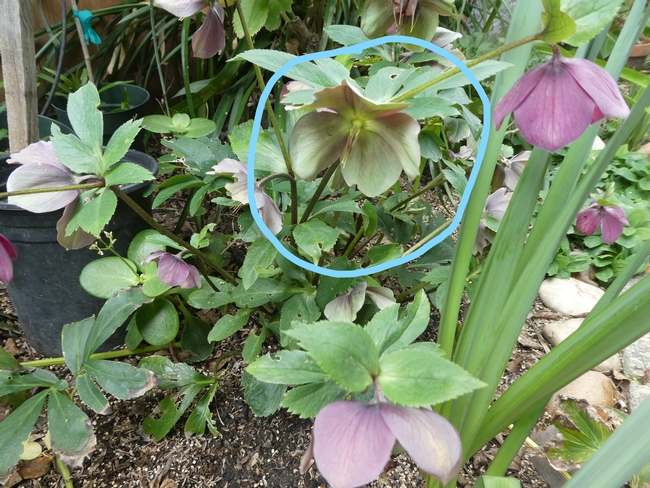
NOTE the greening of flower
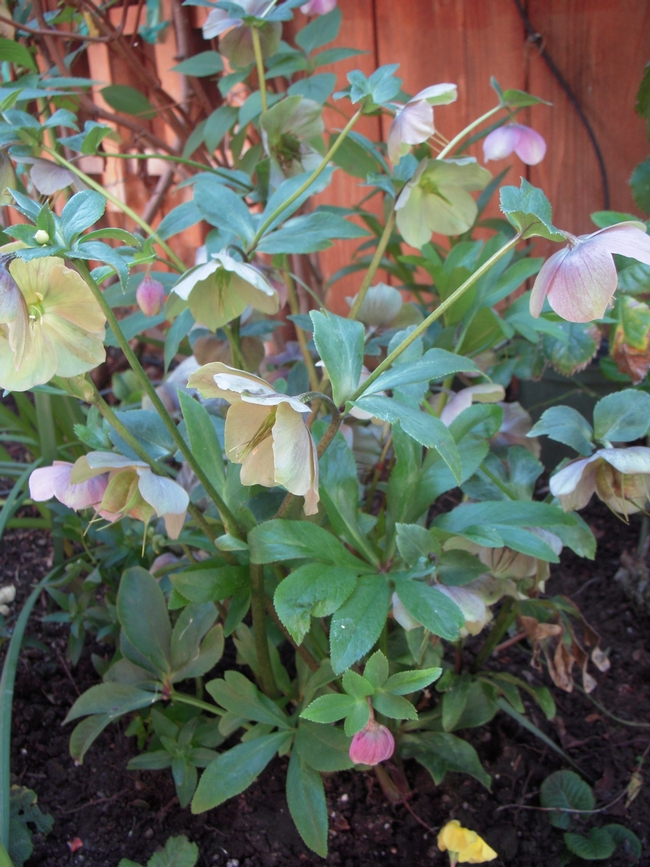
Helebore 3
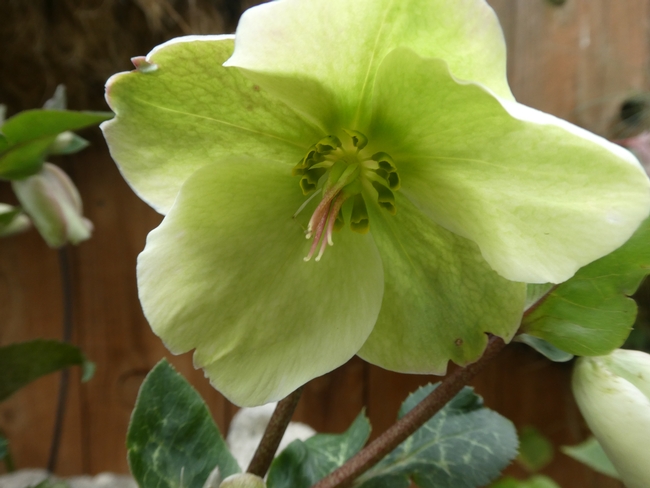
Hellebore4
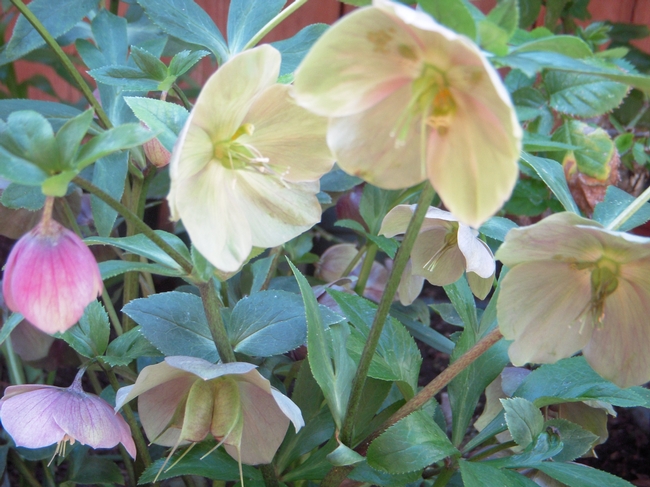
Hellebore5



